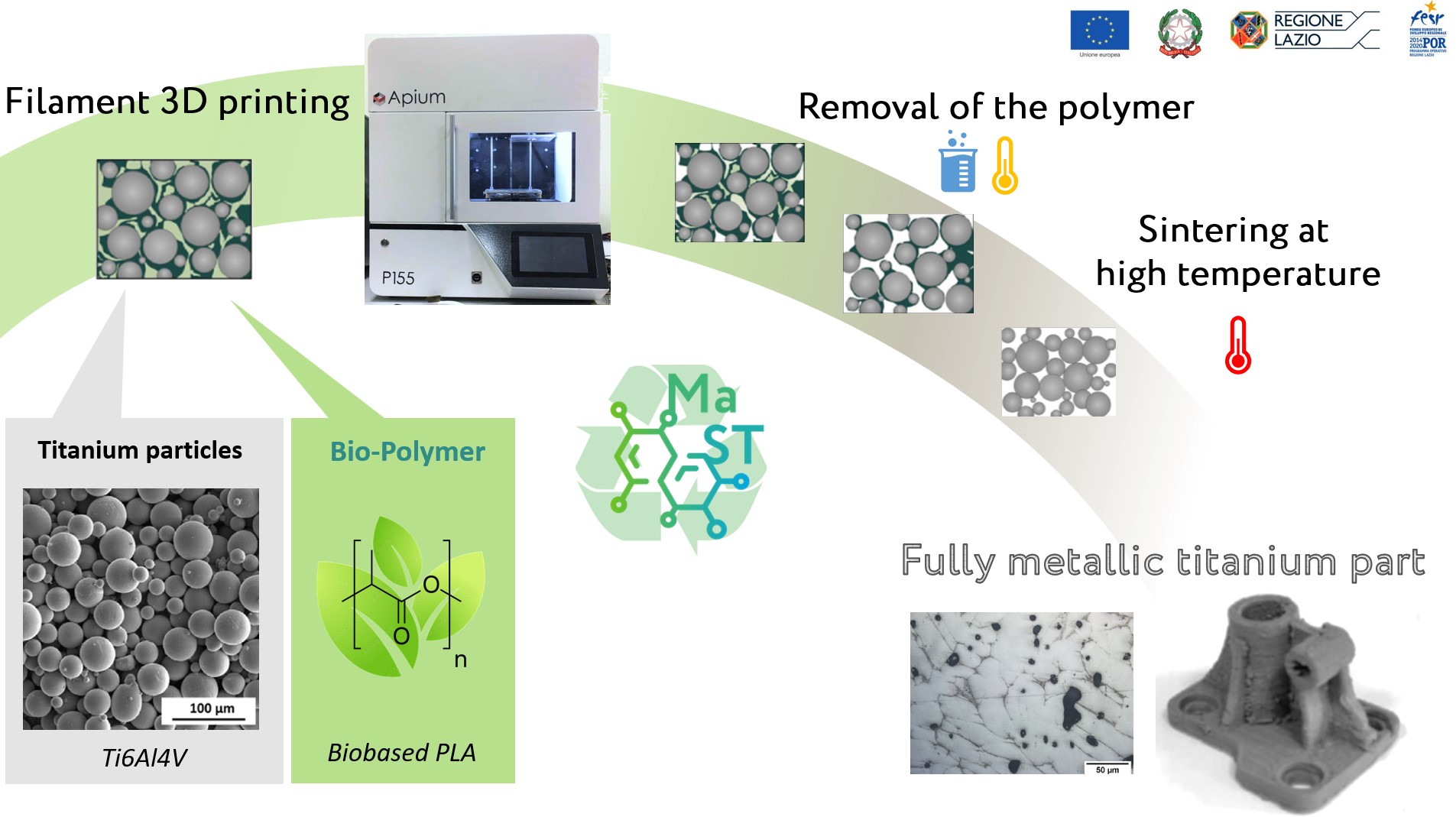In our latest paper, published in Elsevier’s Journal of Materials Research and Technology, we report on the filament 3D-printing of Titanium using biobased feedstock!
3D-printing of metals, which allows for complex geometries unattainable with traditional techniques, is generally carried out via Powder Bed Fusion (PBF) techniques, which are, however, extremely expensive and present additional difficulties in processing metals that are reactive to oxygen, such as Titanium.
Another possibility is the 3D printing of metal+polymer feedstock via the low-cost Fused Filament Fabrication (FFF) technique, followed by the removal of the polymer and the sintering to obtain a fully metallic part.
In our work, filaments composed of Titanium powder, PolyLactic Acid (PLA) polymer and additives were manufactured and 3D-printed via FFF technique. Biobased PLA was used to minimise the overall environmental impact of the binder, since it is removed and therefore wasted.
The solvent and thermal debinding (removal of the polymeric part) and the high-temperature sintering (1500°C) in a protective reducing atmosphere lead to a fully densified metallic component, with interesting applications in aerospace, oil and gas, and biomedical fields.
Read our paper here!
Mario Bragaglia, Matteo Mariani, C. Sergi, F. Sarasini, J. Tirillò, Francesca Nanni. “Polylactic acid as biobased binder for the production of 3D printing filaments for Ti6Al4V alloy manufacturing via bound metal deposition“. Journal of Materials Research and Technology, 2023, 27, 168-181. 10.1016/j.jmrt.2023.09.227
AbstractIn this paper, a biobased binder mainly composed of polylactic acid (PLA) was developed for the production of Ti6Al4V feedstock suitable for 3D printing via material extrusion. 3D printed samples were debound via solvent and thermal treatments and successfully sintered in reducing atmosphere obtaining dense metallic components. The designed and produced bio-binder is completely eliminated during the debinding processes leading to sintered samples showing a high densification (93-94%), with a microstructure composed of primary alpha phase with segregated beta phase at grain boundaries and having average grain size of 70 mm. 3D printed sintered samples show good mechanical properties (yield strength 662 MPa, ultimate tensilte strength 743 MPa, elongation at break 12%, hardness 5.15 GPa) influenced by the sintering parameters and the presence of some degree of micro-porosity in the final structure.
https://doi.org/10.1016/j.jmrt.2023.09.227
This work was supported by the Regione Lazio, “Progetti di Gruppi di Ricerca 2020” – POR FESR LAZIO 2014-2020, Project A0375E0191, CUP E85F21002410002, Project 3DPolMet


